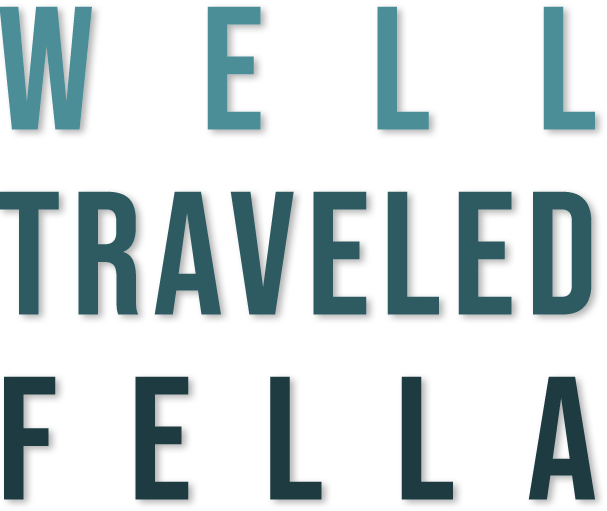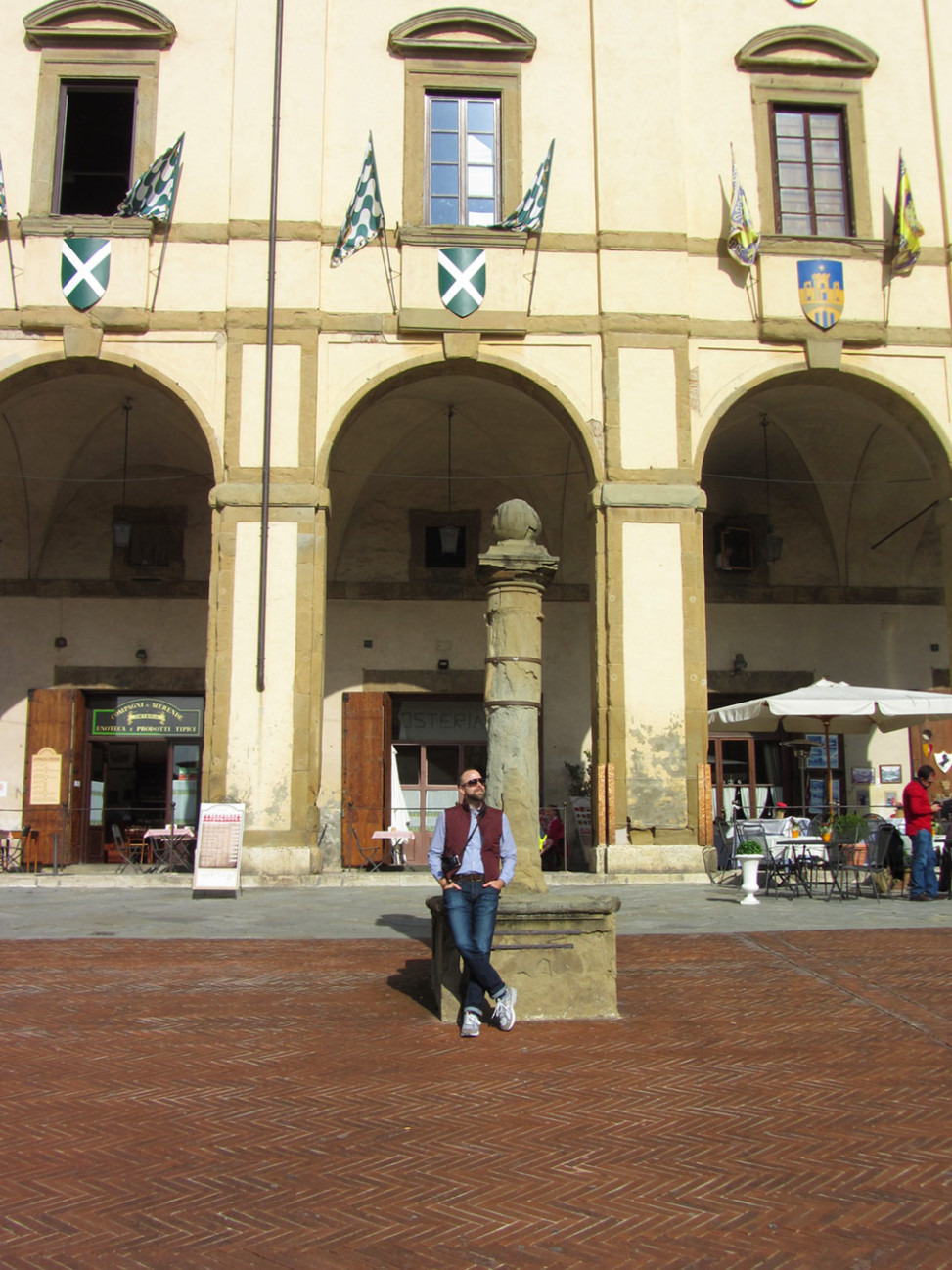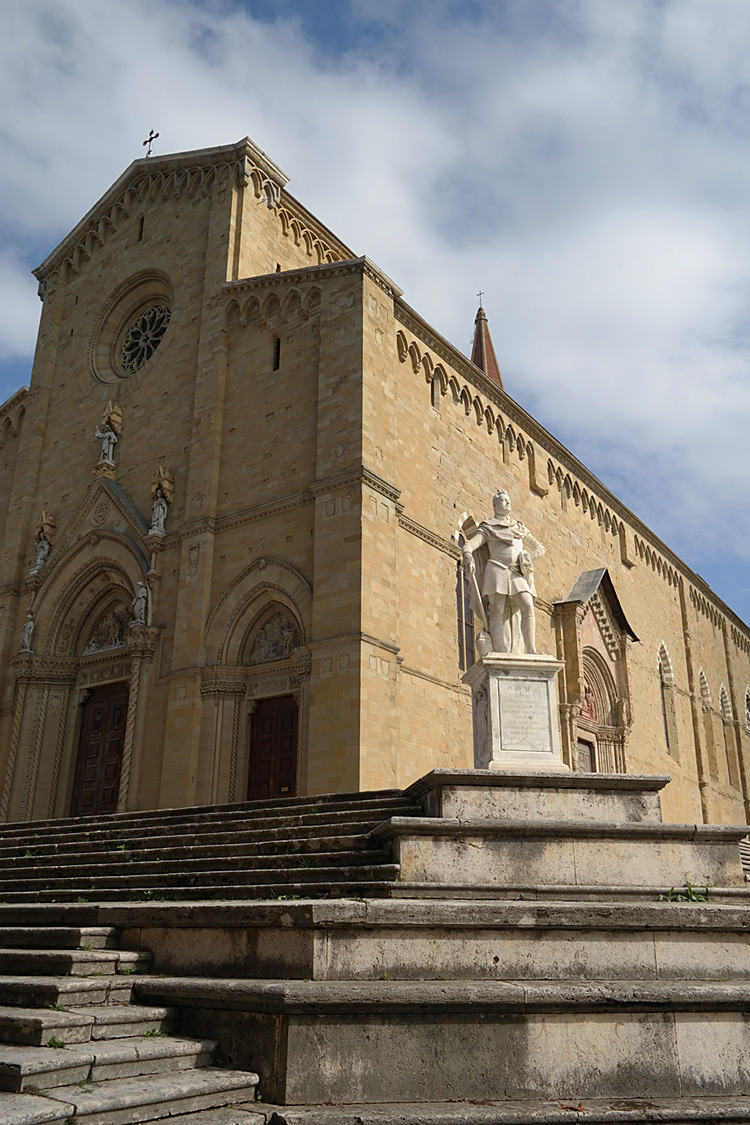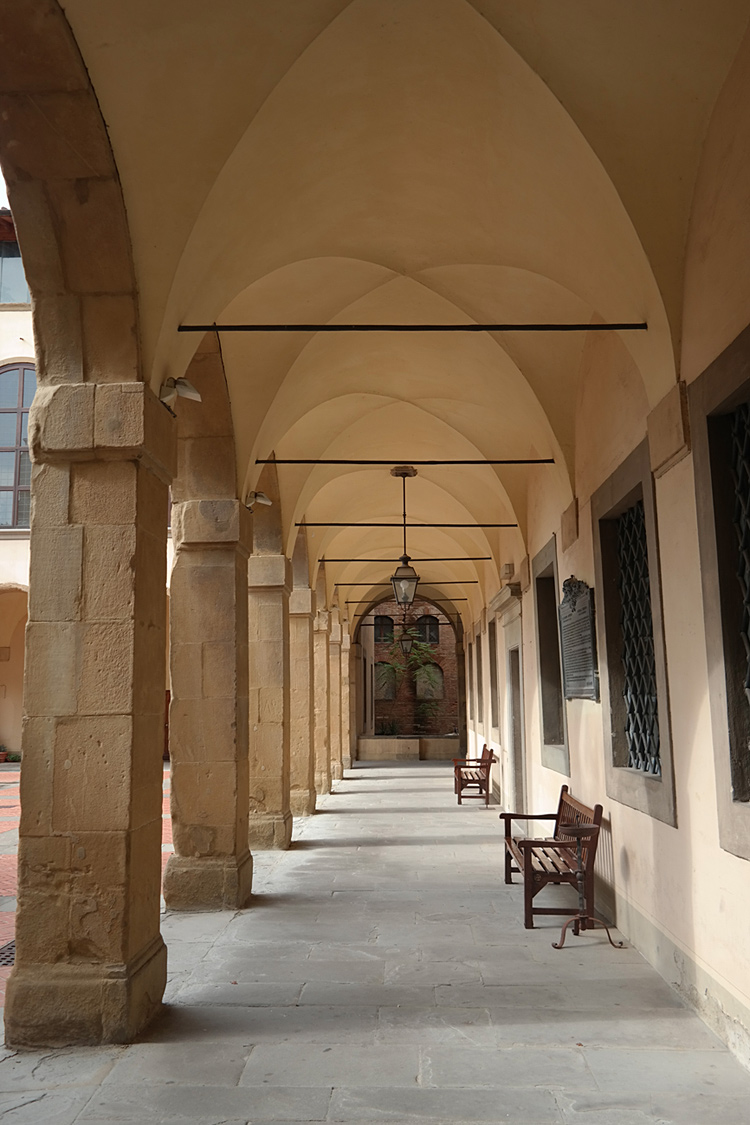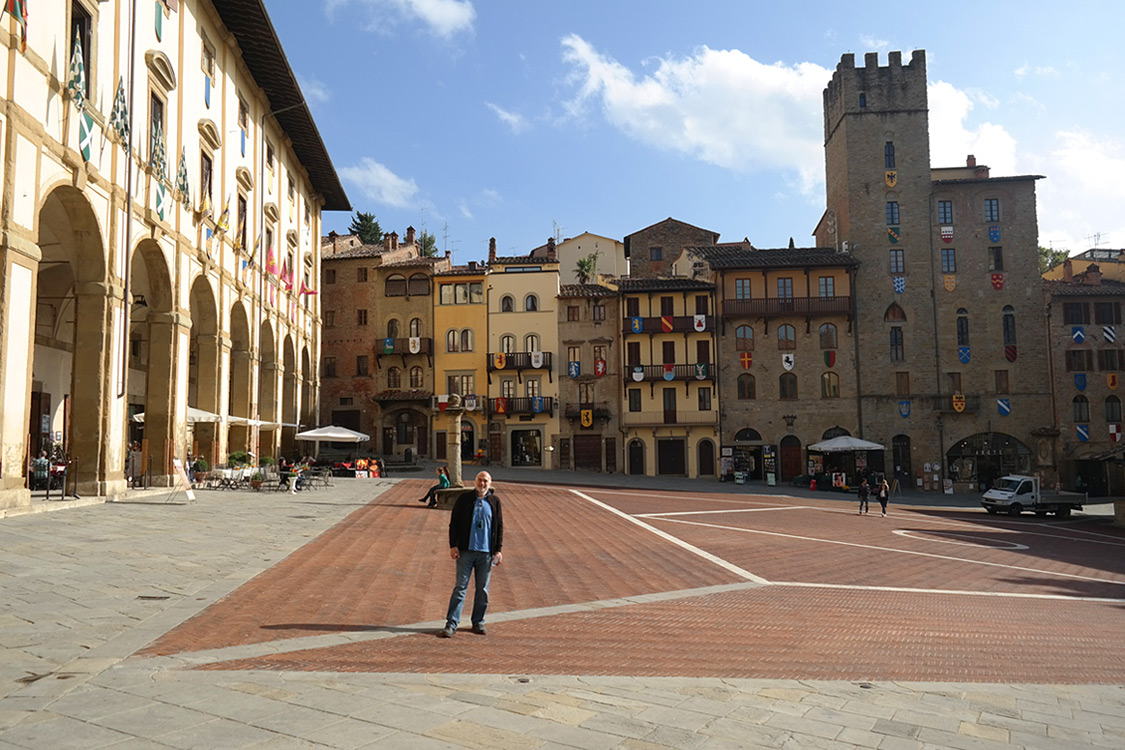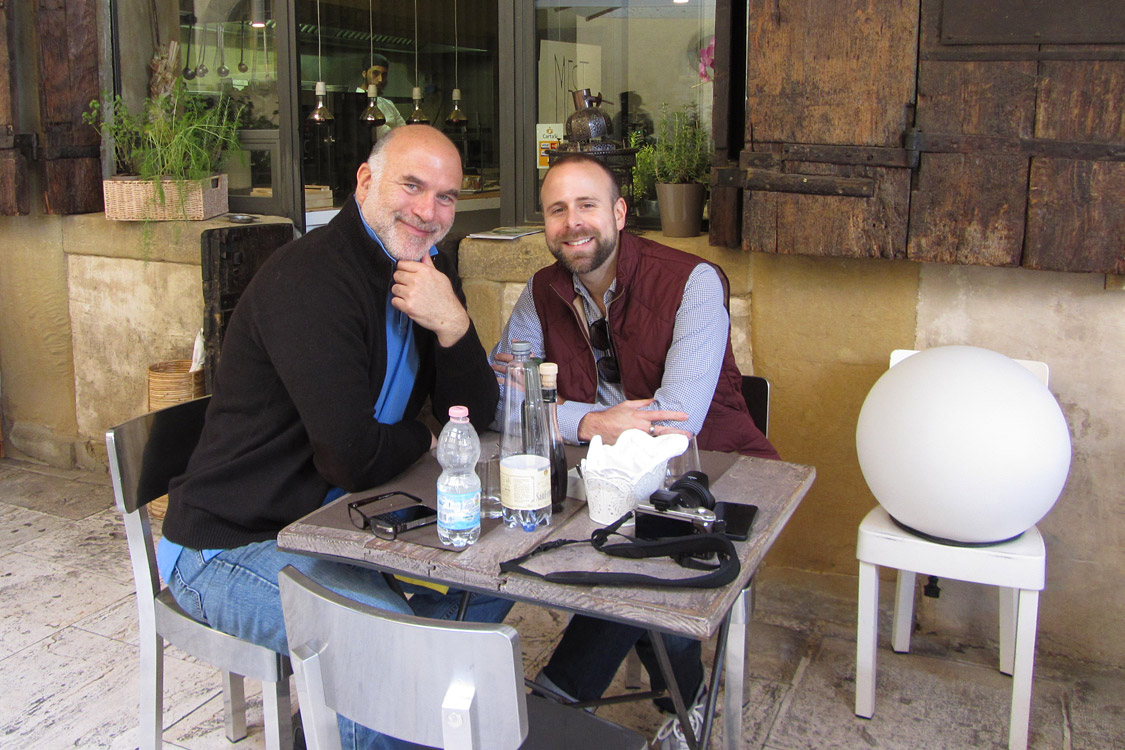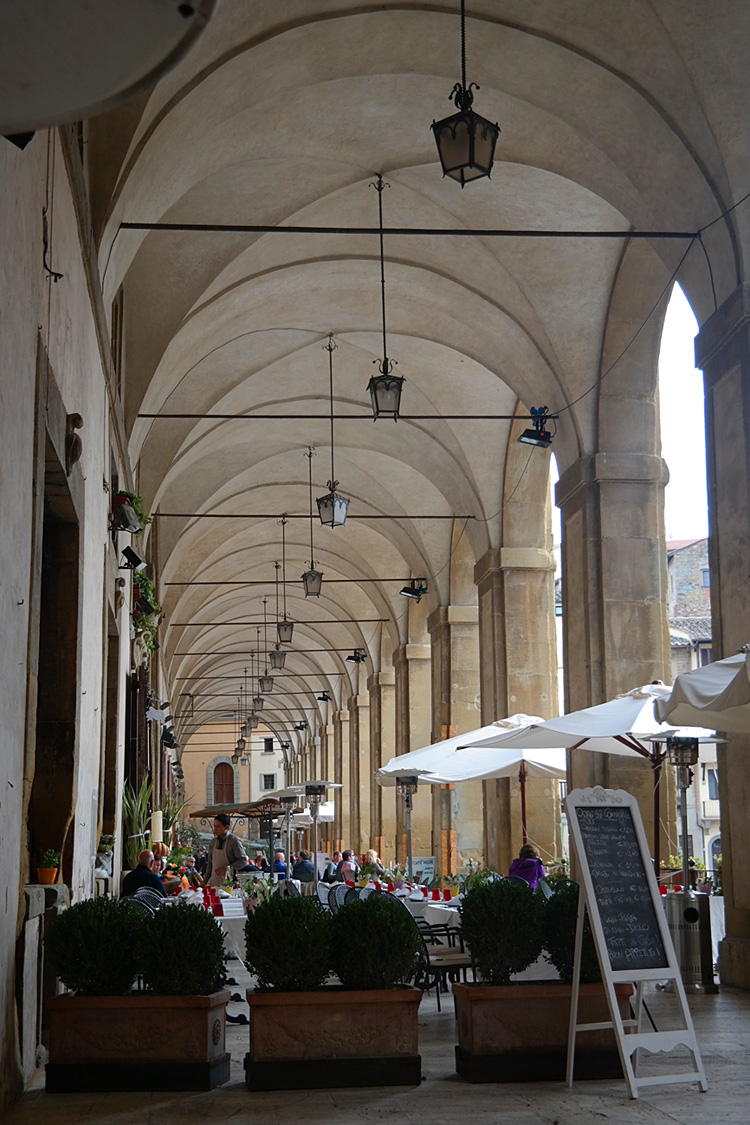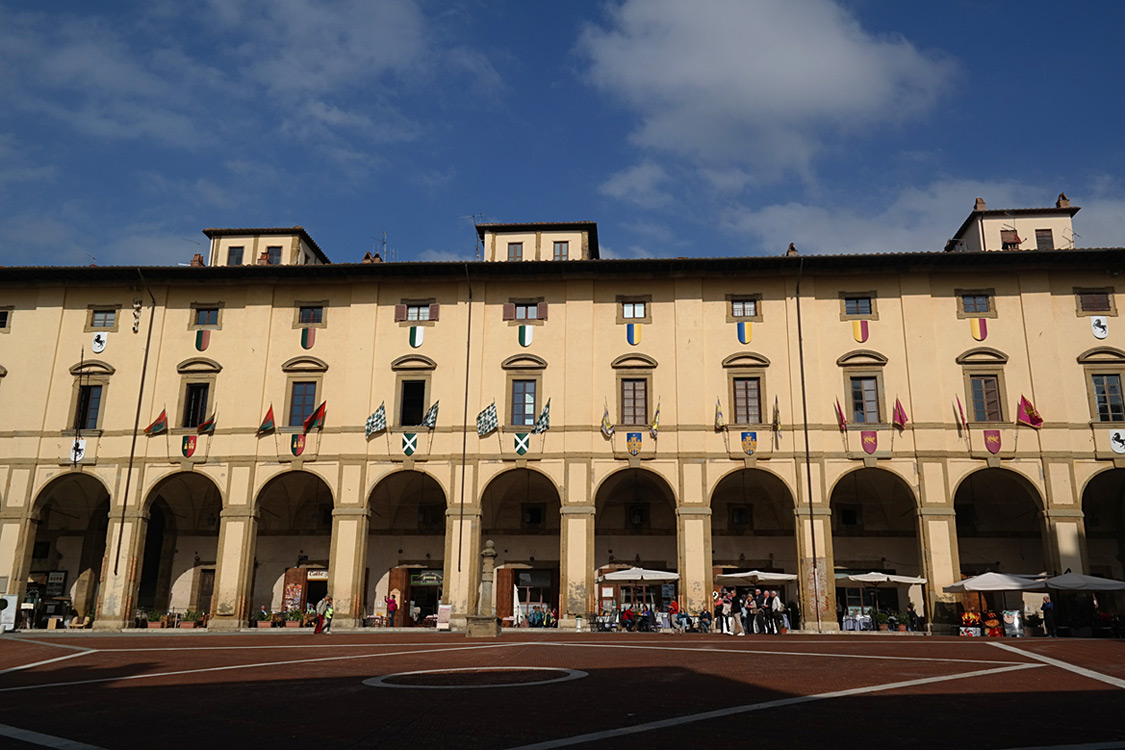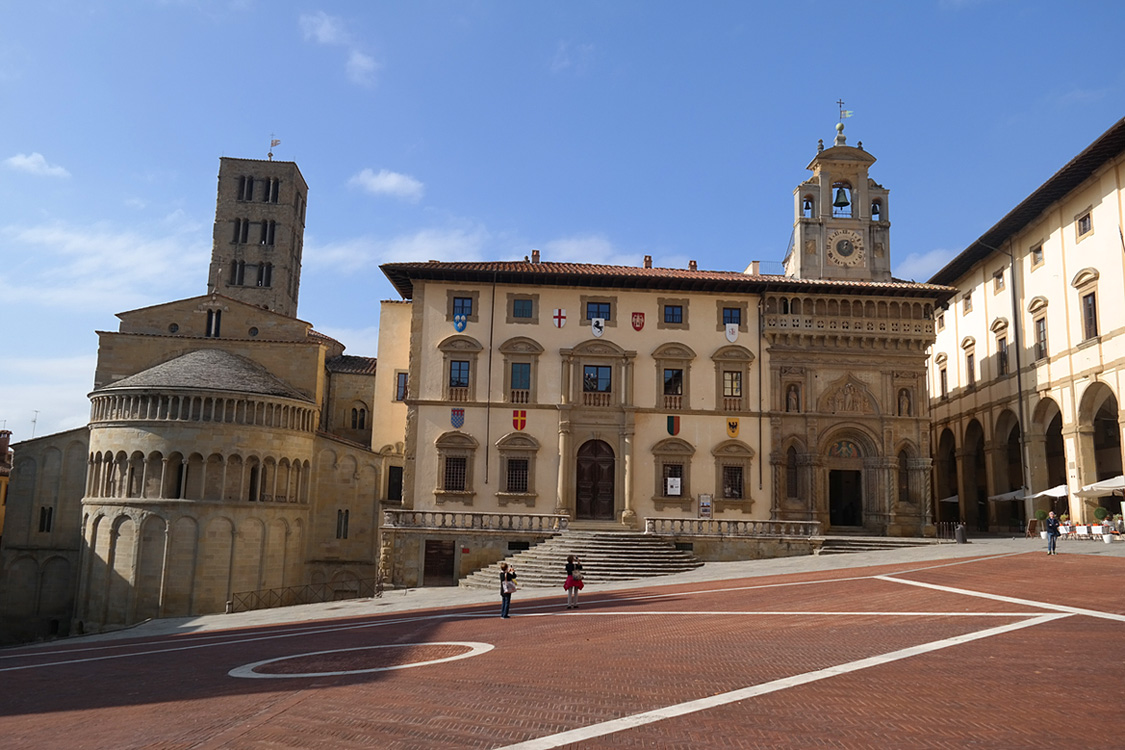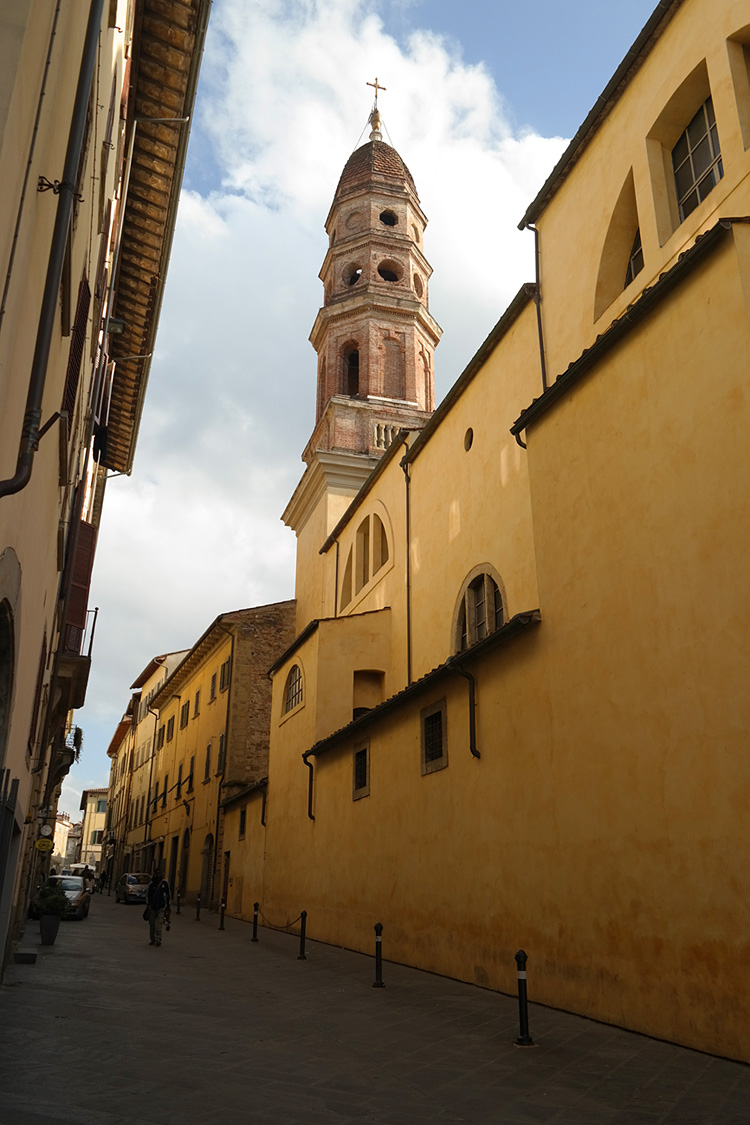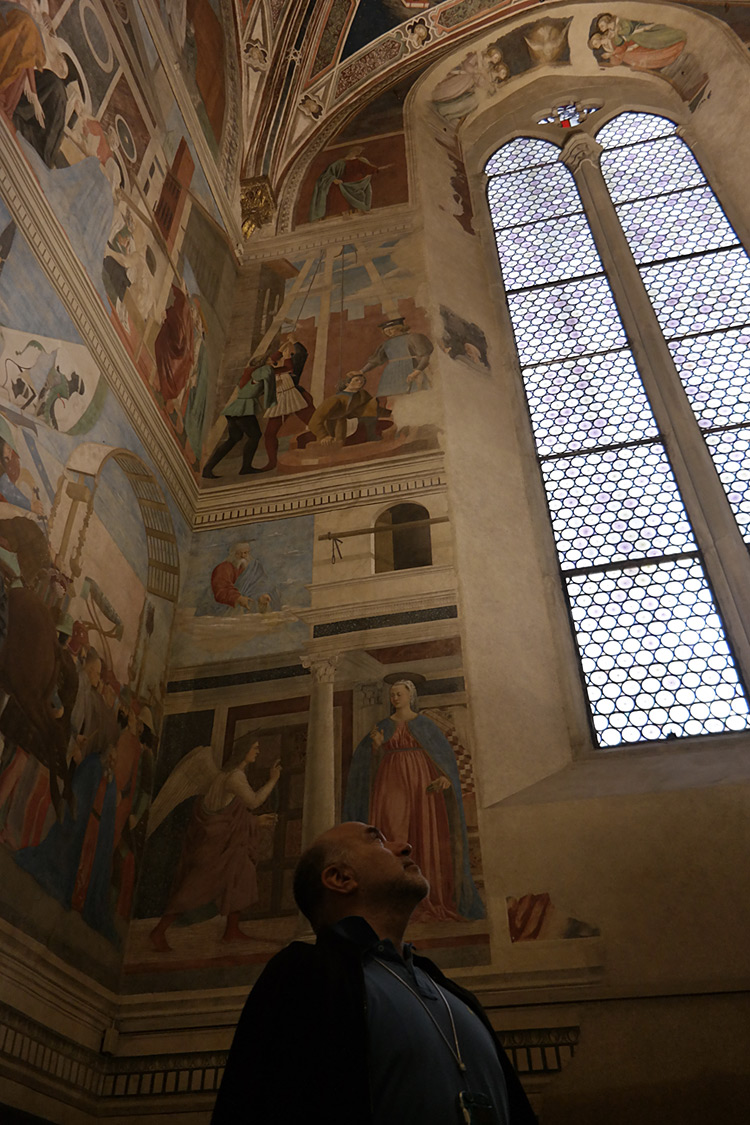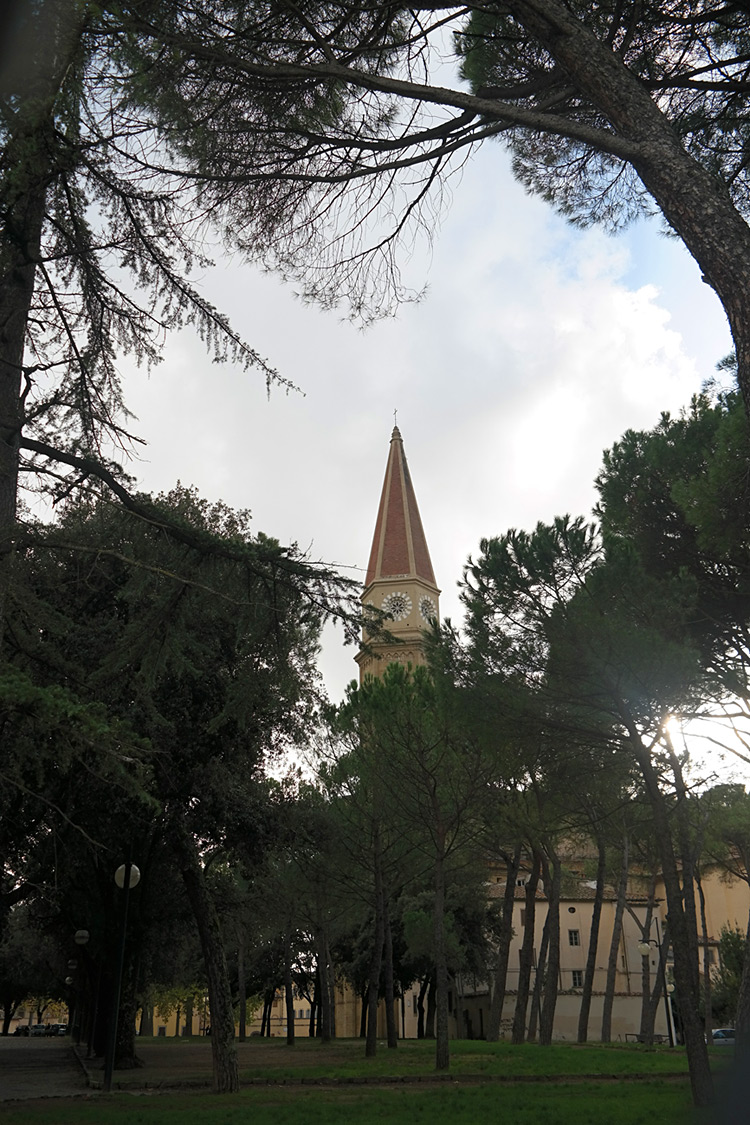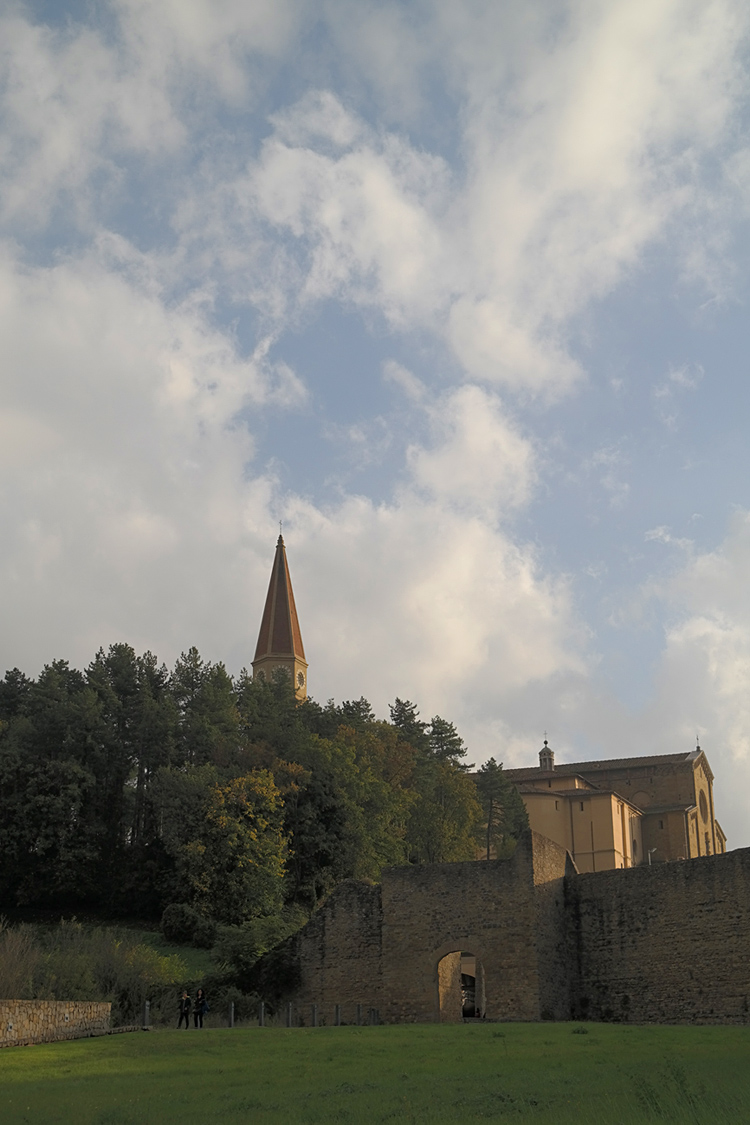It started off as an overcast October morning in eastern Tuscany’s Val di Chiana. Charles and I had spent the prior day, in the rain, exploring San Gimignano and Siena, both beautiful historic cities—but both overrun by tawdry tourist shops and overpriced restaurants serving mediocre food. We were seeking a more authentic Tuscan experience, and it was suggested that we visit Arezzo. A city known to art lovers, Arezzo is home to Piero della Francesca’s most celebrated fresco cycle, Legend of the True Cross, but for the most part, it remains off the radars of mainstream travelers.
From Siena House, the country estate where we were staying just outside Sinalunga, we hopped on the A1 Autostrada and headed north, first stopping at the secret Prada outlet in Montevarchi before making our way to Arezzo. The sky remained dreary along the way, laden with formidable-looking clouds; we were both prepared for more sightseeing in the rain.
Then, as we approached the outer reaches of Arezzo, the clouds began to dissipate and suddenly, a bright sun was shining overhead. Coincidence? I think not. Arezzo was one of the 12 original city-states that formed the Etruscan League. As the first advanced civilization to develop the land, the Etruscans chose this location with distinct geographical purpose, undoubtedly influenced by the region’s temperate micro-climate and its hillside setting above the Arno River floodplain. The phrase Poggio del Sole (“Hill of the Sun”) is associated with several sites throughout Arezzo, and on that day, with the sun casting its golden rays across the city, it most certainly gave the impression of being Il Poggio del Sole.
Arezzo has a beautifully preserved centro storico that is shrouded by bans of urban sprawl, which is perhaps how it stays so protected from the typical tourist traffic seen in other Tuscan towns. There is ample parking and good signage (like the rest of Italy), all with easy access to the historic city center. We parked in the Pietri lot, located just outside the city walls. From the parking lot, there were some spectacular views of the ancient ramparts and buttresses. There was also a very convenient series of escalators that led from the lot up to the information center, with access to the city just beyond.
We entered a covered hallway adjacent to the information center, which let out onto a small piazza in front of Arezzo’s 13th Century Duomo, Cattedrale di San Donato. Unlike the other Duomos we had seen in Florence, Siena, and Orvieto, this one had a relatively simple and unassuming limestone façade, accompanied by a slender and graceful campanile located to the rear of the apse.
From the Duomo, we meandered down a vicolo or two before entering a charming colonnaded portico that poured out onto the sloped Piazza Grande, Arezzo’s immaculate main square. Many of the city’s noteworthy highlights are situated on or around the piazza, which was renamed in 1911 to honor Giorgio Vasari, the renowned Renaissance architect and son of Arezzo. Of Vasari’s many great works, perhaps his most notable is Florence’s Palazzo degli Uffizi, which undoubtedly served as inspiration for his Palazzo delle Logge in Arezzo. The grandiose Palazzo delle Logge spans the entire upper bank of the Piazza Grande, yet the simple design blends harmoniously with the neighboring buildings.
For several moments, Charles and I just stood at the center of the piazza, soaking up the beauty that surrounded us. The autumn Tuscan sun was radiant, bringing to life each structure’s patinated stucco and stone exterior. It was early afternoon and the city was about to shut down for riposo, so we decided to grab a bite to eat. Beneath the gracious arches along the palazzo’s loggia were several quaint restaurants with outdoor seating overlooking the piazza. We settled on Osteria Mest and had a spectacular lunch—perfectly cooked paccheri in a house ragu accompanied by a fresh arugula and tomato salad. Delizioso!
After lunch, it was time for some shopping. Arezzo is one of the world’s major manufacturing centers for gold jewelry, an art form that has been a part of the city’s heritage since Etruscan times. Over the years the jewelry industry has helped to fuel the local economy, which in turn has made Arezzo home to some of the best shopping in Tuscany. The pedestrian thoroughfare, Corso Italia, runs up the spine of the centro storico and is lined with boutiques. And what I love so much about shopping in Italy—the stores aren’t just for women.
We started at Antica Bottega Toscana, a local purveyor of specialty foods, where we purchased fresh, regionally sourced truffle oil. A few doors down, we popped our heads into Lapini, a kitchen and housewares store, where we bought a set of multi-colored stemmed saucers by Bitossi, a Tuscan glass manufacturer. From menswear shop Cecconi, I scored a plush mushroom-hued wool melton blazer tailored in Naples, and Charles fell in love with a caramel leather braided belt. Overall, it appeared that most of the stores existed to serve the local community—not tourists in search of tchotchkes and vacation mementos.
After some more window shopping and a quick stop for a sweet bite, we made our way to Basilica di San Francesco to see Piero della Francesca’s famed fresco cycle. Lucky for us, we were able to buy tickets and reserve an entrance time the day of our visit. During the peak travel season, I’d recommend making an advance reservation since only 25 people are allowed in at a time.
The frescoes, completed in 1466, adorn the ceiling and walls of the church’s apse and depict the Legend of the True Cross, the story of the building of the cross used to crucify Christ. The cycle is quite beautiful and, for the most part, very well-preserved. Della Francesca’s painting style obtains a lifelike quality through his focus on depth and perspective and his use of awe-inspiring colors. We spent the next 30 minutes gazing up and down at della Francesca’s work, taking in all the brush strokes of this Renaissance masterpiece.
On our way back to the car, we took a stroll through the Passeggio del Prato, a lovely tree-lined park flanked by the Duomo, the remains of a medieval Medici fortress, and the same ramparts we saw upon first arriving. Our timing was perfect…the sun was about to be overtaken by a sea of ominous looking clouds. With shopping bags in hand, we blissfully made our way down the series of stairs and escalators, back to the parking lot where our journey had begun earlier that day. Charles and I couldn’t have been more pleased. That authentic Tuscan experience we were after—it had been satisfied by a most memorable afternoon in Arezzo.
(Last visited in October, 2015)
